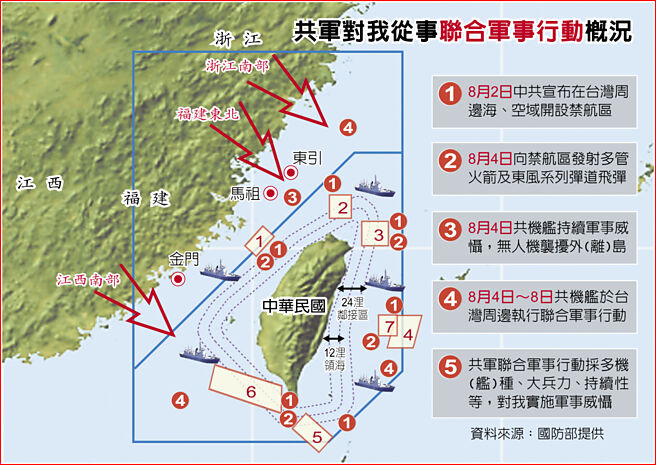我軍加速機械化、資訊化、智慧化融合發展
現代英語:
The Fifth Plenary Session of the 19th CPC Central Committee made strategic arrangements for my country’s economic and social development during the 14th Five-Year Plan period and the long-term goal of basically achieving socialist modernization by 2035. In terms of national defense and military construction, the plenary session communiqué emphasized accelerating the integrated development of mechanization, informationization, and intelligence. This strategic requirement is of great significance for improving the strategic capabilities of our military to defend national sovereignty, security, and development interests, and ensuring the realization of the struggle goal of the 100th anniversary of the founding of the army by 2027 and the basic realization of national defense and military modernization by 2035.
1. Fully understand the importance of accelerating the integrated development of the “three transformations”
Accelerating the integrated development of mechanization, informationization and intelligence is based on the understanding and implementation of Xi Jinping’s thoughts on strengthening the military. In his report to the 19th National Congress of the Communist Party of China, President Xi pointed out that “we should accelerate the development of military intelligence and improve the joint combat capability and all-domain combat capability based on the network information system”. On the eve of the August 1st Army Day this year, President Xi presided over the 22nd collective study of the Political Bureau of the CPC Central Committee on strengthening national defense and military modernization, and put forward the strategic idea of ”accelerating the integrated development of mechanization, informationization and intelligence”. The Fifth Plenary Session of the 19th CPC Central Committee further emphasized and deployed this, and incorporated it into the 14th Five-Year Plan and the 2035 Vision Goals for implementation, which will greatly accelerate the pace of our military modernization.
On April 8, 2020, soldiers from the Sarang Border Defense Company of a border defense regiment of the Ali Military Sub-district in Tibet used drones to scout the terrain. Photo by Liu Xiaodong/Guangming Photo
In today’s world, driven by a new round of scientific and technological revolution, a new wave of military revolution is coming. Artificial intelligence, quantum information, big data, cloud computing and other cutting-edge technologies are accelerating their application in the military field. Various unmanned combat platforms and intelligent weapon equipment systems have appeared in large numbers and put into modern battlefields. The form of war is rapidly evolving towards intelligent warfare after cold weapon war, hot weapon war, mechanized war and information war. Recently, the armed conflict between Azerbaijan and Armenia has presented the world with a textbook drone war. People have seen drones destroying chariots, tanks and artillery as easily as “roll calling” on the Internet. This may become another sign of the advent of intelligent warfare.
According to relevant data, at present, at least more than 70 countries in the world are developing unmanned intelligent military platforms, and some military powers are stepping up the intelligent upgrade of their armed forces. In 2019, the United States announced the “National Artificial Intelligence Strategy” and the “Department of Defense Artificial Intelligence Strategy”, and launched the implementation of intelligent strategies at the national, military, and service levels. Nearly 80% of its “Third Offset Strategy” against China and Russia is closely related to artificial intelligence technology. The United States has already developed or used a large number of smart bombs, smart missiles, drones, robot soldiers, etc. The US military plans to achieve unmanned intelligentization of 60% of its ground combat platforms by 2030.
If our army wants to achieve modernization and remain invincible, it must stand at the forefront of the new military revolution and accelerate the integrated development of mechanization, informationization and intelligence. The white paper “my country’s National Defense in the New Era” released by the Chinese government last year pointed out: “China’s military transformation with Chinese characteristics has made significant progress, but the task of mechanization construction has not been completed, the level of informationization needs to be improved urgently, and military security faces the risk of technological surprise and the widening of the technological gap. The level of military modernization is still far behind the national security needs and the world’s advanced military level.” At present, the intelligent development of our army has just started, and the development of mechanization and informationization is not sufficient. However, compared with the previous military revolutions led by the West, the technological gap of our army in the new round of military revolution is not large. We must seize the opportunities of the times, conform to the current development status of our army, and accelerate the integration of intelligence while promoting mechanization and informationization.
2. Correctly understand the connotation of accelerating the integrated development of the “three transformations”
From the perspective of the process of technology promoting combat effectiveness, mechanical technology amplifies human skills, information technology extends human perception, and artificial intelligence technology expands human intelligence. Mechanization, informationization, and intelligence are essentially amplification and efficiency enhancement of human ability to control war. Although these three empowerment methods are simple and complex, backward and advanced, and single-dimensional and multi-dimensional, they are inseparable from each other and are reflected as an inseparable unity in advanced equipment. Their development is like the first generation of jet fighters focusing on breakthroughs in engines, the second generation of fighters focusing on breakthroughs in aerodynamics, the third generation of fighters focusing on breakthroughs in system integration, and the fourth generation of fighters focusing on breakthroughs in intelligence. It is a process of mutual penetration, gradual progression, orderly dependence, and inclusiveness. Without the former “one transformation”, there would be no latter “two transformations”. Intelligence is a higher form of development and undoubtedly needs to be accelerated, but this does not mean that mechanization and informationization can be avoided, because if mechanization and informationization are skipped and the focus of construction is fully shifted to intelligence, intelligence will become a “castle in the air”, and haste makes waste.
In a certain sea area, multiple types of carrier-based aircraft of the Liaoning aircraft carrier are arrayed on the deck. Xinhua News Agency
Intelligence represents advanced combat effectiveness, is the development direction of future military construction and war, and is the leader in accelerating the integration of the “three transformations”. We must take advantage of the direction of intelligence to seek a generational advantage in military construction and future operations. Informatization is the leading factor. Informatization plays a connecting role between intelligence and mechanization, and is in a dominant position in the integration of the “three transformations”. At present, information capabilities still play a major role in the generation of combat effectiveness of our army, and the informatization of weapons and equipment is still in the main aspect. We should aim at intelligence to accelerate the upgrading and transformation of informatized weapons and equipment, form an equipment system with informatized weapons and equipment as the backbone, and improve the system combat capability based on information systems. Mechanization is the foundation. Mechanization is the material basis and carrier for the development of intelligence and informatization. Intelligent technology and information technology have greatly improved the accuracy and reaction speed of weapons, but to achieve “accurate, far and fast” is inseparable from a strong combat platform and power capability, and to “hit hard” depends on the improvement of weapon power. Our army’s mechanization foundation is not strong, and it still owes a “debt” for mechanization development in the information age. It is necessary to promote the construction of new mechanization at the same time.
To accelerate the integrated development of the “three transformations”, with the focus on accelerating intelligent development, we must have a strong sense of opportunity and urgency. We cannot wait until mechanization and informatization are fully developed and then advance intelligent development step by step. Instead, we must seize the opportunities of the scientific and technological revolution and take extraordinary measures to promote intelligence.
3. Find the focus of accelerating the integrated development of the “three transformations”
Among all the reasons for backwardness, backwardness in ideology is the most fundamental. After studying the success and failure of military reforms in history, British military expert Liddell Hart said that the only thing more difficult than instilling new ideas in a soldier is to remove his old ideas. Those who can successfully keep up with the pace of changes in the form of war and successfully push forward military reforms all regard changing old ideas and establishing new ideas as their top priority. To accelerate the integrated development of the “three transformations”, we must have a brainstorming and conceptual revolution. We must have the courage to break through the mindset of mechanized warfare and even information warfare, establish ideas and concepts that are compatible with intelligent warfare, strengthen system thinking, data thinking, and algorithmic thinking, break the mindset of “winning by quantity and scale”, and firmly establish the concept of “winning by quality and efficiency”; break the mindset of “labor-intensive development” and firmly establish the concept of “intelligence-intensive development”; break the mindset of “passive use of weapons and equipment” and firmly establish the concept of “machine autonomous dominance”; break the mindset of “relying only on manned platforms for combat”, and firmly establish the concept of “unmanned, human-machine integrated platform combat”, etc., use new ideas and concepts to open up ideas for integrated development and seek ways to accelerate development.
The core of accelerating the integrated development of the “three transformations” is to accelerate the development of intelligence, and the key factor is to promote scientific and technological innovation. Whether it is hardware represented by physical entities such as combat platforms, weapons and ammunition, or software centered on combat data, algorithms, and models, all require strong scientific and technological innovation to support. Science and technology are core combat power and the most active and revolutionary factor in military development. Under the great changes that have not been seen in a century, the United States has put pressure on us in all fields, especially in the field of high-tech, increasing its blockade and containment of us. Scientific and technological innovation has never had such a profound impact on the overall national and military strategy as it does today, and has never had such a profound impact on the construction and development of our army as it does today. We must vigorously implement the strategy of strengthening the army with science and technology, put national defense scientific and technological innovation in a more prominent position, insist on demanding combat power from scientific and technological innovation, and realize the transformation from following and running side by side to running side by side and leading.
The key to accelerating the integrated development of the “three transformations” is to strengthen the support of talents. Fundamentally speaking, it is a challenge of intelligence and cutting-edge technology. In particular, with the in-depth development of intelligence, the relationship between people and weapons will inevitably be reshaped, and there will inevitably be leapfrog requirements for people’s quality. The human factor in future wars will be concentrated in the talent factor. The strength of talents determines the success or failure of development. We must implement the strategy of strengthening the army with talents, highlight the construction of key talent teams such as joint combat command talents, new combat force talents, high-level scientific and technological innovation talents, and high-level strategic management talents. We must implement the “Decision on Accelerating the Construction of a Three-in-One New Military Talent Training System” recently issued by the Central Military Commission, give full play to the main channel role of military academy education, adhere to the battlefield and the troops, update the education concept, deepen the teaching reform, and take the connotation-based development path with improving the quality of talent training as the core. We must give full play to the melting pot role of the troops’ training practice, focus on promoting knowledge transformation and capability generation, and let officers and soldiers practice skills and talents in promoting the integrated development of the “three transformations” and military struggle preparation, and experience the wind and rain and be tempered in completing urgent, difficult and dangerous tasks. We must give full play to the role of military vocational education as a large classroom, focus on improving professional literacy, professional quality, and job skills, and expand and consolidate the knowledge and ability base of new military talents through continuous learning and in-depth specialized research.
Guangming Daily (November 8, 2020, p. 05)
現代國語:
【講武堂】
作者:吳志忠(軍事科學院軍隊政治工作創新發展研究中心研究員)
黨的十九屆五中全會對十四五時期我國經濟社會發展和二〇三五年基本實現社會主義現代化遠景目標作了戰略部署。在國防和軍隊建設方面,全會公報強調加速機械化資訊化智慧化融合發展。這項戰略性要求對於提高我軍捍衛國家主權、安全、發展利益的戰略能力,確保二〇二七年實現百年建軍奮鬥目標、二〇三五年基本實現國防和軍隊現代化具有重要意義。
1.充分認識加快「三化」融合發展的重要性
加速機械化資訊化智慧化融合發展,是基於對習近平強軍思想的領悟落實。習主席在黨的十九大報告中就指出,「加速軍事智能化發展,提升基於網路資訊體系的聯合作戰能力、全域作戰能力」。今年八一建軍節前夕,習主席在主持中共中央政治局就加強國防和軍隊現代化建設舉行的第二十二次集體學習時,提出“加快機械化信息化智能化融合發展”這一戰略思想,黨的十九屆五中全會對此作了進一步強調部署,並納入十四五規劃和二〇三五遠景目標中加以實現以實現現代化,這必將加快發展步伐。
2020年4月8日,西藏阿里軍分區某邊防團薩讓邊防連官兵利用無人機偵察地形。劉曉東攝/光明圖片
當今世界,在新一輪科技革命推動下,新一輪軍事革命浪潮撲面而來,人工智慧、量子資訊、大數據、雲計算等前沿科技加速運用軍事領域,各種無人作戰平台和智慧化武器裝備系統大量出現並投入現代戰場,戰爭形態繼冷兵器戰爭、熱兵器戰爭、機械化戰爭、資訊化戰爭之後智能化戰爭快速演變。最近,阿塞拜疆和亞美尼亞兩國的武裝沖突,給世人呈現出一場頗具教科書意義的無人機戰爭,人們在網絡上看到無人機像「點名」一樣輕松擊毀戰車、坦克、火砲,這或許成為智能化戰爭來臨的又一時代標志。
據有關資料,目前世界上至少有70多個國家在發展無人智慧化軍用平台,部分軍事強國加緊推進軍隊智慧化升級。 2019年,美國公佈《國家人工智慧戰略》《國防部人工智慧戰略》等,啟動實施國家、軍隊、軍種層面智慧化戰略,其針對中俄的“第三次抵消戰略”,有接近80%的項目與人工智能技術密切相關,美已經大量開發或使用靈巧炸彈、智能導彈、無人機、機器人士兵等,美軍計劃到2030年60%的智能化地面作戰。
我軍要實現現代化、立於不敗之地,就必須站立新軍事革命的潮頭,加速推進機械化資訊化智慧化融合發展。我國政府去年發布的《新時代的中國國防》白皮書指出:「中國特色軍事變革取得重大進展,但機械化建設任務尚未完成,信息化水平亟待提高,軍事安全面臨技術突襲和技術代差被拉大的風險,軍隊現代化水平與國家安全需求相比差距還很大,與世界先進軍事水平相比差距還很大。差距並不大,我們要把握好時代機遇,契合我軍發展現狀,在推進機械化資訊化時加快融入智能化。
2.正確理解加速「三化」融合發展的內涵
從技術推動戰鬥力生成歷程看,機械技術放大人的技能,資訊化技術延伸人的感知,人工智慧技術拓展人的智能,機械化資訊化智能化本質上是對人駕馭戰爭的能力放大增效。這三種賦能方式雖然有簡單與復雜、落後與先進、單維與多維差別,但三者之間你中有我、我中有你,在先進裝備上體現為不可分割的統一體,其發展如同第一代噴氣式戰鬥機重在突破發動機、第二代戰鬥機重在突破空氣動力、第三代戰鬥機重在突破系統上、相互影響推進過程。沒有前“一化”就沒有後“兩化”,智能化是發展的更高形態,無疑需要加快發力,但這絕不意味著可以不要機械化信息化,因為如果跳過機械化信息化,把建設重點全面轉向智能化,智能化就會成為“空中樓閣”,反而欲速則不達。
在某海域,遼寧艦多型艦載機列陣甲板。新華社發
智慧化代表先進戰鬥力,是未來軍隊建設和戰爭的發展方向,是加快「三化」融合發展的龍頭,要以智慧化「化」出來的方向優勢,謀取軍隊建設和未來作戰的代差勝勢。資訊化是主導。資訊化在智慧化和機械化之間,起著承上啟下的作用,在「三化」融合發展過程中處於主導地位。目前,資訊能力在我軍戰鬥力生成模式中仍然起著主要作用,武器裝備資訊化建設還處於主要方面,我們應瞄準智能化加快推進信息化武器裝備升級改造,形成以信息化武器裝備為骨幹的裝備體系,提高基於信息系統的體係作戰能力。機械化則是基礎。機械化是智慧化、資訊化發展的物質基礎和載體。智慧技術、資訊技術大大提高了武器的命中精度和反應速度,但要實現「打得準、打得遠、打得快」離不開強有力的作戰平台和動力能力,而要「打得狠」則要依靠武器威力的提升。我軍機械化底子還不厚,進入資訊化時代仍欠機械化發展的“賬”,有必要同時推進新型機械化建設。
加速「三化」融合發展,重點在於加速智慧化發展,要有強烈的機遇意識與緊迫感,不能等機械化資訊化充分發展後,再按部就班推進智慧化發展,而必須抓住科技革命機遇,採取超常措施推進智慧化。
3.找準加快「三化」融合發展的著力點
在一切落後所導致的原因中,思想觀念的落後最為根本。英國軍事家利德爾·哈特在研究歷史上軍事變革的成敗後說,唯一比向軍人灌輸新觀念更難的是去除他的舊觀念。能成功跟上戰爭形態變化步伐,成功將軍事變革推向前進的,無不把改變舊觀念、樹立新觀念作為首要任務。加速「三化」融合發展,必須來一場頭腦風暴和觀念革命,要勇於突破機械化戰爭乃至信息化戰爭的思維定勢,樹立與智能化戰爭相適應的思想觀念,強化體系思維、數據思維、算法思維,破除「以數量規模取勝」的思維定勢,牢固的設備確立“支持質量支持”的被動理念;主導」的理念;破除「僅依靠有人平台作戰」的思維定勢,穩固確立「無人、人機融合平台作戰」的理念等,用新的思想觀念打開融合發展思路,謀取加快發展出路。
個人資料圖片
加速「三化」融合發展的核心是加速智慧化發展,關鍵因素是推進科技創新,無論是作戰平台、武器彈藥等物理實體為代表的硬件,還是以作戰數據、演算法、模型等為核心的軟件,無不需要強大的科技創新作支撐。科學技術是核心戰鬥力,是軍事發展中最活躍、最具革命性因素。在百年未有之大變局下,美對我實施全領域施壓,尤其在高新技術領域加大對我封鎖遏制。科技創新從來沒有像今天這樣深刻影響國家和軍事戰略全局,從來沒有像今天這樣深刻影響我軍建設發展。我們必須大力實施科技強軍戰略,把國防科技創新放在更突出的位置,堅持向科技創新要戰鬥力,實現由跟跑並跑向並跑領跑轉變。
加快「三化」融合發展的要害的是強化人才支撐,從根本上說是智能力和前沿科技的挑戰,特別是隨著智能化深入發展,人與武器的關係必將重塑,對人的素質必然有跳躍式要求,未來戰爭中人的因素,將集中體現為人才因素,人才的強弱決定著發展的成敗。我們要深入實施人才強軍戰略,突顯強化聯合作戰指揮人才、新型作戰力量人才、高層次科技創新人才、高水準戰略管理人才等重點人才隊伍建設。要貫徹落實中央軍委最近剛剛印發的《關於加快推進三位一體新型軍事人才培養體系建設的決定》,發揮軍隊院校教育的主渠道作用,堅持面向戰場、面向部隊,更新教育理念,深化教學改革,走以提高人才培養質量為核心的內涵式發展道路。要發揮部隊訓練實踐的大熔爐作用,聚焦促進知識轉化、能力生成,讓官兵在推進「三化」融合發展和軍事鬥爭準備中練本領、長才幹,在完成急難險重任務中經風雨、受歷練。要發揮軍事職業教育的大課堂作用,圍繞提升職業素養、專業品質、崗位技能,在持續學習、專項深研中,拓展夯實新型軍事人才知識與能力基礎。
《光明日報》( 2020年11月08日 05版)









